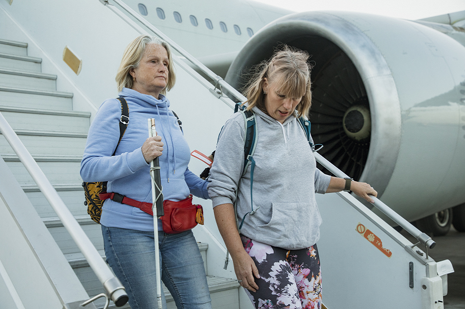
Aviation is the business of freedom. And before COVID-19 revolutionized our lives and the industry, over 4.5 billion passengers took to the skies each year. However, many travelers have physical or invisible disabilities, meaning flying may be an inconvenient, or represent a worrying or even painful experience for these passengers. What is the industry doing to ensure that safe, reliable and dignified air travel is equally accessible to all passengers?
December 3 marks the International Day of Persons with Disabilities, a timely moment to reach out to Linda Ristagno, Assistant Director External Affairs and Head of Accessibility at IATA, and ask her to tell us more.

More than one billion people live with some form of disability, which represents 15% of the global population.
Since the adoption of the United Nations Convention on the Rights of Persons with Disabilities (UNCRPD) in 2006, the level of awareness and policy actions surrounding the rights of persons with disability has significantly and positively increased.
However, barriers limiting the ability of elderly and disabled persons to take full advantage of international air transportation services remain. These include different or incompatible regulatory requirements, and the absence of international laws or harmonized accessibility measures throughout the passenger journey.
The number of elderly as well as persons with disabilities make up a significant and growing percentage of the world’s population and constitute the world’s largest minority. Thus, making global air travel fully accessible for them and… for all is not only the right thing to do but makes perfect business sense.
First and foremost, it is important to highlight that accessibility is a human rights issue, and that IATA has been addressing it as such for many years.
Nearly 70 years ago, IATA member airlines agreed to Resolution 700, which made aviation the first transport sector worldwide to set standards for passengers requiring assistance. Since 2019, IATA has stepped up and embraced the disability movement’s guiding principle of ‘Nothing For Us, Without Us’. This means involving passenger representatives in all stages of the development of airline accessibility policy and standards, and keeping the focus on disability, accessibility, and inclusion, together and as one. In other words, we introduced a sense of mutual accountability and a culture of global cooperation and inclusion.
In our ambition to take specific and comprehensive steps and to lead by example, that same year, we launched a comprehensive accessibility strategy that is embedded in all of what IATA and its members do.
Over the years, a number of initiatives were launched to address some priority areas for the industry. For example, to address the issue of the growing number of wheelchair assistance at airports, in 2019, workshops were held in London, Delhi and New York. These brought together representatives from regulators, airlines, disability organizations, airports, and other regional stakeholders to assess current realities, challenges, and opportunities for the passengers through the differentiation of the assistance service. We expect that more in-person workshops will be run once the COVID-19 situation allows.
Upcoming focus areas will include continuing to develop meaningful dialogue between the accessibility and aviation communities, and more reviewing and modernizing standards and processes, including addressing how the travel chain can improve the consistent application of service accommodation requests.
When adopted, Regulation EC 1107/2006 was ahead of its time in setting standards and guidelines, and has encouraged more customers with additional needs to travel. However, accessibility has largely improved, and the airline industry has demonstrated that it is able to self-regulate without relying on a prescriptive regulation.
For example, the EC regulation still refers to Passengers with Reduced Mobility (PRM), an outdated expression that solely concerns a small customer segment with ambulatory needs. IATA is instead using Passengers With Disabilities (PWD) and adopted the name ‘accessibility’ for a customer-centric and global approach. The lack of common terminology and proper definition is creating confusion between airlines, airports, travel agents and the passengers they serve.
IATA member airlines have committed to inclusiveness and accessibility, including for persons with disabilities. They recognize the benefits of driving improvements, integrating the work into all service standards, and making sure that processes work equally for all customers.
IATA continuously advocates for a harmonized regulatory framework and urge states to coordinate with both Industry and disability associations when developing their policies. Coordinated and consistent policy is the only way airlines can transport passengers with disabilities in a safe, secure, and efficient manner.
Additional information: